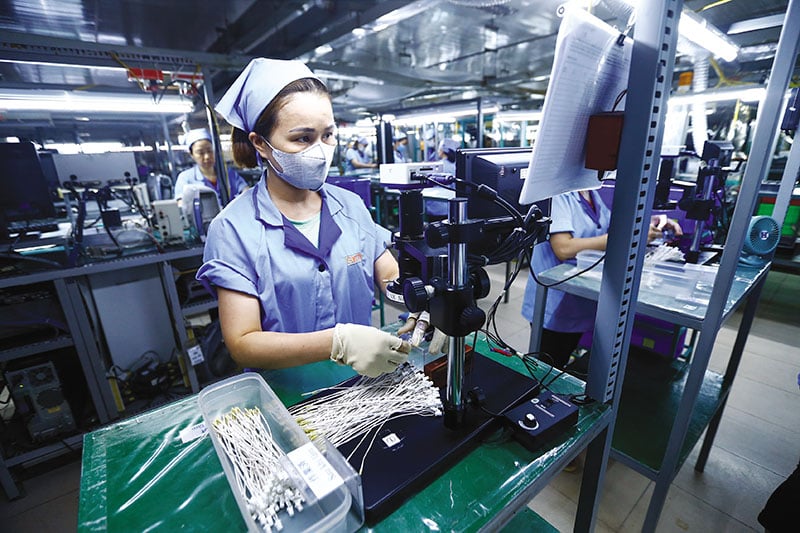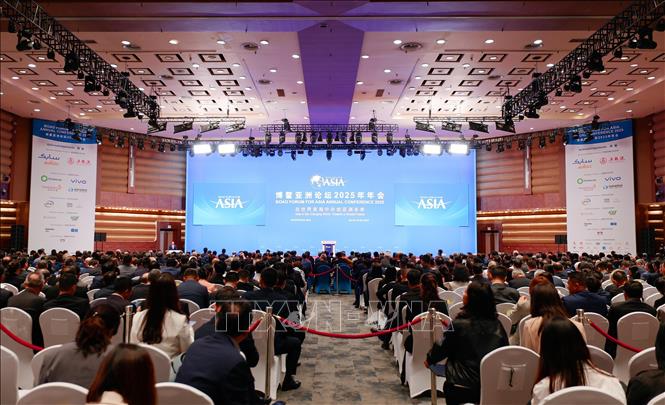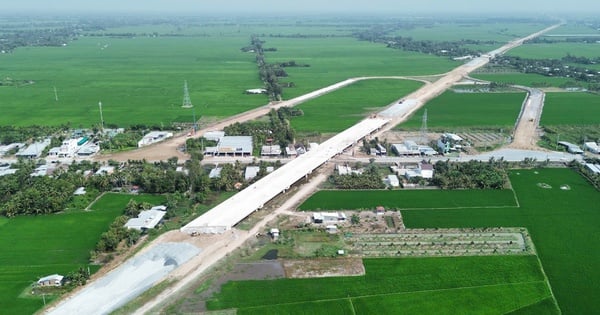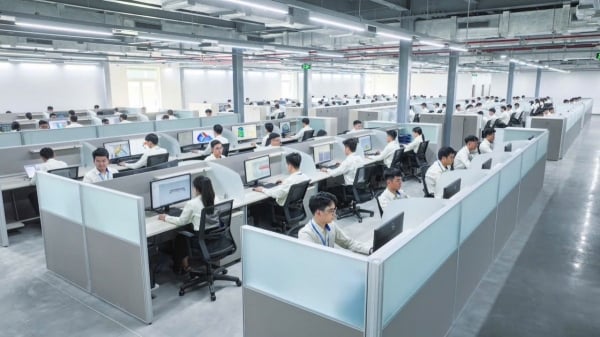The determination to grow the economy by over 8% by 2025 is huge. However, the challenges are not small and need to be resolved soon.
The determination to grow the economy by over 8% by 2025 is huge. However, the challenges are not small and need to be resolved soon.
 |
| In January 2025, the Index of Industrial Production (IIP) is estimated to decrease by 9.2% compared to the previous month. Photo: Duc Thanh |
Worry about production
Industrial production continues to be considered the driving force of economic growth. This is more important than ever, as the Government is determined to achieve a growth rate of over 8%. However, there are signs that it will not be easy for industrial production, especially the processing and manufacturing industry, to grow as expected.
According to data from the Ministry of Planning and Investment, in January 2025, the Index of Industrial Production (IIP) is estimated to decrease by 9.2% compared to the previous month and increase by only 0.6% compared to the same period last year. This is understandable, because January this year coincides with the Lunar New Year holiday, with fewer working hours than in January 2024. During the Lunar New Year in 2024, the IIP even decreased by 6.8% compared to the same period.
However, this index is causing concern to the National Assembly's Economic Committee. Examining the Government's report on the Project on supplementary socio-economic development in 2025, with a growth target of over 8%, Mr. Vu Hong Thanh, Chairman of the National Assembly's Economic Committee, said that the production and business situation in early 2025 has not improved much, when the IIP Index in January 2025 only increased slightly by 0.6% over the same period, while the Purchasing Managers' Index (PMI) was below 50 points for 2 consecutive months, showing that business conditions in the manufacturing sector in Vietnam have narrowed.
"Therefore, we propose that the Government focus on analyzing and evaluating implementation conditions to ensure the feasibility of the Project," Mr. Vu Hong Thanh emphasized.
In fact, when S&P Global released Vietnam’s PMI Index for January 2025, with a score of only 48.9 points, lower than the 49.8 points in December 2024, there were concerns. The number of new orders fell, leading to a decline in output for the first time in the past 4 months. Although the rate of decline was slight, Mr. Andrew Harker, Chief Economist at S&P Global Market Intelligence, spoke of a not-so-good start to 2025.
“Weak demand has led to further declines in new orders and output,” said Andrew Harker, adding that manufacturers are hopeful that the situation will improve soon and are at least more optimistic than they were at the end of 2024.
In 2024, Vietnam's IIP Index, according to the General Statistics Office, increased by 8.4%, the highest since 2020. This is a high increase on the low increase of 2023, thereby actively supporting economic growth. In particular, the processing and manufacturing industry, with an increase of 9.6% for the whole year, played a leading role in growth.
High growth expectations are also continuing to be set for this sector. In the scenario developed by the Government, in order for the country's GDP to grow by over 8%, the industrial and construction sector must grow by around 9.5% or more, of which the processing and manufacturing industry must grow by 9.7% or more.
This figure is much higher than the previous scenario, when the National Assembly decided on a full-year growth rate of 6.5-7%, striving to reach 7-7.5%. In this scenario, the growth of the industrial and construction sector is determined at 6.9-7.6%, of which the processing and manufacturing industry increases by 7.4-8.3%.
The gap between the two scenarios is quite large, up to 1.9-2.6 percentage points, if compared to the growth rate of the entire industrial and construction sector. If only considering the processing and manufacturing industry, the gap is 1.3-2.3 percentage points. To achieve the new scenario, no small effort is needed.
Solving the challenge
There is a very remarkable statistic, that is, in January 2025, the IIP Index compared to the same period last year increased in 47 localities and decreased in 16 localities nationwide. There is a reason related to the Lunar New Year holiday, but the fact that up to 16 localities had a decrease in IIP is very remarkable. Moreover, many localities with large industrial scale had a decrease in IIP.
 Localities with large industrial scale had IIP decrease in January 2025: Ba Ria - Vung Tau decreased by 1.8%; Can Tho decreased by 2.8%; Quang Nam decreased by 4.3%; Thanh Hoa decreased by 5.5%; Quang Ninh decreased by 6.9%. Hai Duong decreased even more sharply, up to 10.6%. Meanwhile, Dong Nai decreased by 11.8%; Hai Phong decreased by 13.2%; Binh Duong decreased by 13.5%; Hanoi decreased by 15.2%; Bac Ninh decreased by 15.4%; Bac Giang decreased by 16.3%; Quang Ngai decreased by 19.4%; Vinh Phuc decreased by 20.6%; Da Nang decreased by 17.1%. The economic locomotive of the whole country - Ho Chi Minh City - also decreased by 21.1%.
Localities with large industrial scale had IIP decrease in January 2025: Ba Ria - Vung Tau decreased by 1.8%; Can Tho decreased by 2.8%; Quang Nam decreased by 4.3%; Thanh Hoa decreased by 5.5%; Quang Ninh decreased by 6.9%. Hai Duong decreased even more sharply, up to 10.6%. Meanwhile, Dong Nai decreased by 11.8%; Hai Phong decreased by 13.2%; Binh Duong decreased by 13.5%; Hanoi decreased by 15.2%; Bac Ninh decreased by 15.4%; Bac Giang decreased by 16.3%; Quang Ngai decreased by 19.4%; Vinh Phuc decreased by 20.6%; Da Nang decreased by 17.1%. The economic locomotive of the whole country - Ho Chi Minh City - also decreased by 21.1%. 
Any comparison with the same period last year must wait for the first two months of the year to make an accurate assessment. However, the relatively high declines in the country's major industrial centers have shown similarities with the results of the S&P Global survey on the deterioration of production conditions in Vietnam.
The problem is that this is not just a Vietnamese problem. The latest report from S&P Global shows that manufacturing activity in Asia weakened in January 2025, as demand from China declined and President Donald Trump’s tariffs weighed on business confidence. Southeast Asia even saw manufacturing activity hit an 11-month low with the IIP at 50.4 points.
Since late last year, concerns have been raised about the risks associated with trade in goods in 2025, as the Trump administration has implemented new tariff policies. This is a fact, as recently, orders to impose export tariffs on some partners and some items, of which steel and aluminum are an example, have been announced.
At the regular Government meeting in January 2025, Prime Minister Pham Minh Chinh also suggested observing and analyzing the risk of a global trade war that could disrupt supply chains and narrow export markets in order to have timely policy responses. That means the risks are unpredictable.
If the risk of trade in goods occurs, it will affect industrial production - an important growth driver of the economy. In the context of unpredictable factors in the global market, it is worth noting that domestic demand remains low.
Last year, total retail sales of goods and consumer services revenue after deducting the price factor increased by only 5.9%. In the first month of this year, although the increase was 9.5%, it was still lower than the same period of Tet months in previous years (2018-2019).
To boost growth, this challenge must be addressed. Therefore, in the Project report to the National Assembly, the Government emphasized solutions to promote private investment and processing and manufacturing industries, as well as promote consumption and exports.
“It is necessary to develop mechanisms and policies on tax and credit to support increased purchasing power, stimulate consumption and domestic tourism,” said Minister of Planning and Investment Nguyen Chi Dung, adding that to promote production, it is necessary to remove difficulties in administrative procedures and the investment and business environment, ensure capital needs for the economy, hit targets, focus on production and business sectors, priority sectors and traditional growth drivers such as consumption, investment and export.
Source: https://baodautu.vn/hoa-giai-thach-thuc-dua-kinh-te-tang-truong-tren-8-d246913.html


![[Photo] President Luong Cuong and King Philippe of Belgium visit Thang Long Imperial Citadel](https://vstatic.vietnam.vn/vietnam/resource/IMAGE/2025/4/1/cb080a6652f84a1291edc3d2ee50f631)
![[Photo] Close-up of Vietnam's sniffer dog team searching for earthquake victims in Myanmar](https://vstatic.vietnam.vn/vietnam/resource/IMAGE/2025/4/1/d4949a0510ba40af93a15359b5450df2)
![[Photo] General Secretary To Lam receives King Philippe of Belgium](https://vstatic.vietnam.vn/vietnam/resource/IMAGE/2025/4/1/e5963137a0c9428dabb93bdb34b86d7c)

![[Photo] Prime Minister Pham Minh Chinh meets with King Philippe of Belgium](https://vstatic.vietnam.vn/vietnam/resource/IMAGE/2025/4/1/be2f9ad3b17843b9b8f8dee6f2d227e7)



























![[Photo] Myanmar's capital in disarray after the great earthquake](https://vstatic.vietnam.vn/vietnam/resource/IMAGE/2025/4/1/7719e43b61ba40f3ac17f5c3c1f03720)





























































Comment (0)